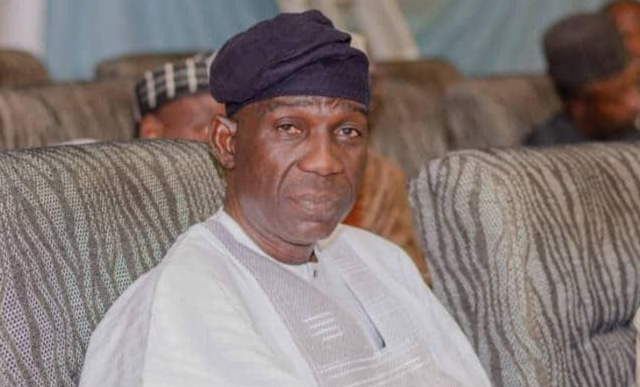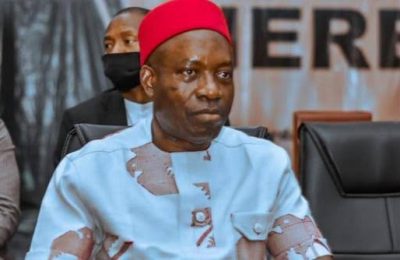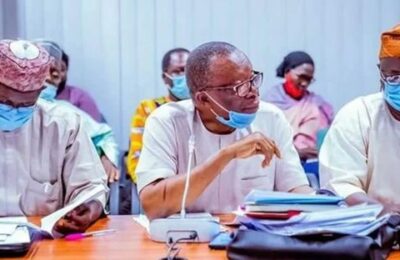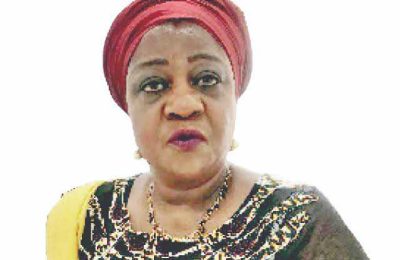State Governors in the country have been urged to expand grazing routes for the persistent farmers/herders violent clashes which have led to the loss of several lives and properties across the country to be tackled.
The assertion was made by the Surveyor-General of Adamawa State, Pwavidon Simon, who said that the grazing routes which were created over 61 years ago when the population of Nigerians and the number of cattle were very low have now been overtaken by farmers or as a result of infrastructural developments.
Pwavidon Simon stated this in an interview with Journalists shortly after delivering a goodwill message at the opening ceremony of a Three -day Scientific Conference and Annual General Meeting of the National Association of Geodesy held at the Abubakar Tafawa Balewa University (ATBU), Bauchi over the weekend.

According to him, Nigeria is faced with climate change and global warming mainly as a result of human activities adding that the farmers/herders crisis is just a big hype just as he called on the federal and state governments to do the needful to reduce crisis that often leads to the loss of lives and property.
He stressed, “Before now, the size of a typical cattle route is 30 meters and this was done around 1963 when the population was around 55 million and very few numbers of cattles, this is 2024, imagine the influx of cattle from sub-saharan Africa down into the hinterland looking for pasture, and look at the population of Nigeria, don’t you think we have overstretched the grazing routes?”
The Surveyor-General added “We need to expand it (grazing routes) in such a way that in the course of the expansion, the government will create buffers between the farms and the routes so that when the cattle strays, it will not go into the farmlands but into a grazeland, which is a buffer between the grazeland and the cattle route.”

He further said that “Until you are able to map out all these things and make referencing, the meaning of referencing is so that you’ll have information so that if you’re in Dubai, Medina or any part of the world, you can query something and make pronouncements that will help to improve the well-being of the people.”

ALSO READ: Ondo 2024: Why I’m most qualified to succeed Akeredolu — Edema
He said that Adamawa State is making conscious efforts to create clear boundaries between farms and cattle routes to prevent clashes between farmers and herders.
He then called on states especially in the North, to visit Adamawa State to learn from it what it is doing to address these issues so they can replicate such in their states.
He also said that: “Adamawa is a pluralistic society with over 200 ethnic groups that have been together from time immemorial and we desire to continue as such. We want to use Adamawa as a model.”
“Adamawa has several grazing areas. Overtime, between 1963 and now which is 61 years and counting, there are developments, settlements that have cropped up there, human corridors have been created, a lot of things have taken place,” he stressed.
“What do we then do? We have the green card by His Excellency, the express order to bring solutions. Presently, we are working on mapping out all the grazing reserves in such a way that we carry out statistical analysis to know what has taken place overtime. What remaining and how do we maximize that?,” he asked.
According to him, “Talking about the grazing routes, it is a corridor but now, considering the pressure on the grazing routes, some have been taken over by realities. Realities are physical developments, they could be farmlands, they could be structures, they could be roads, they could be rail lines that have crossed over, they need to be relocated in such a way that it will enhance the business of rearing cattle as they move across the routes.”
While proffering solutions, Pwavidon Simon said that: “My suggestion as a State Surveyor General is this: it is one thing to have the routes, it is another thing to secure them so that you promote the well-being and inter-personal relationships as well as business and trade.”
He stressed that, “Create a corridor and within it, designate a route that will go at least, more than 1,000 feet or 100 meters. When you have that grazing route, create a buffer from both sides of the grazing routes, create another 100 meters in the minimum and call it a grassland which the cattle can enjoy.”
“Then outside that buffer, the farmlands can start from there. The farmer away from the buffer will not have justification to farm into the grassland which is a buffer between the corridor and the farm,” he added.
He further said that, “And the herder who is on the move, will have that comfort, even if his cattle strays, say, up to 100 feet, which is 30 meters, you know it is still within the grazing area, he will not have infringed on anybody’s liberty and at the same time, he can withdraw his cattle to come back to the route.”
The Surveyor-General added that “Remember, within that corridor in the grasslands, you can create surface dams so that if the cattle need water, they go and drink there and proceed.”
According to him, “Along that corridor, you can create veterinary outpost to take care of instances of diseases they will encounter as they move here and there. We, in Adamawa, want to set an example, we will develop it and it will be an example for the north.”








